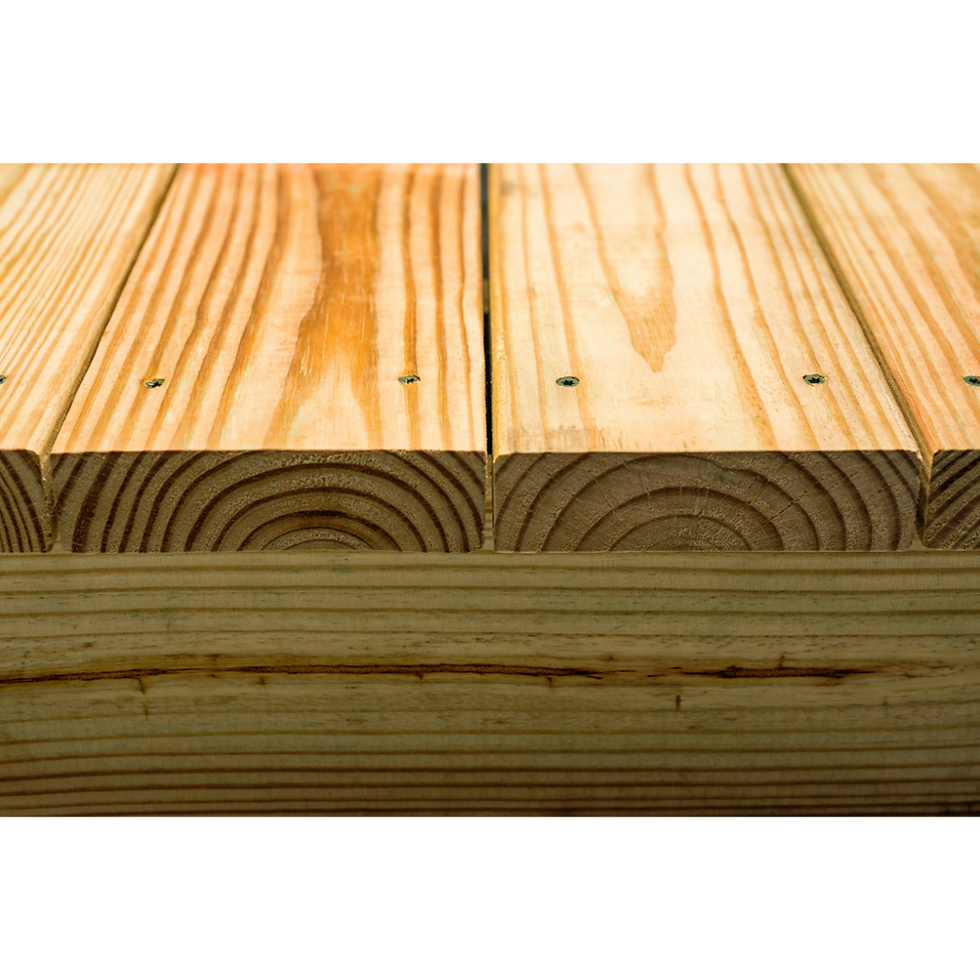The Changing Face of Pressure-Treated Wood: Longevity and Costs
- JCS

- Nov 24, 2024
- 3 min read
Updated: Jan 9
The Changing Face of Pressure-Treated Wood: Balancing Longevity and Costs
With it's low costs, pressure-treated (PT) wood has long been a staple in deck building, earning its place with decades of proven durability. For years, Chromated Copper Arsenate (CCA) was the star of the show, keeping decks solid and rot-free for over 40 years. But as environmental standards evolved, so did the formulas used to treat PT wood. Enter the newer treatments—Alkaline Copper Quaternary (ACQ) and Copper Azole (CA). These alternatives might be kinder to the environment, but they’ve left homeowners and builders scratching their heads over one glaring issue: they just don’t last as long.
The Modern PT Wood Dilemma
The switch from CCA to newer treatments came with good intentions, aiming to reduce risks to the environment and human health. However, these updated preservatives aren’t sticking around in the wood as effectively as their predecessor. Studies show that ACQ-treated lumber exposed to heavy moisture can start showing rot in as little as eight years.
Even the "upgraded" versions like Micronized Copper Quaternary (MCQ) and Micronized Copper Azole (MCA) are struggling to hit the durability benchmarks that CCA set decades ago. This shortened lifespan is creating a ripple effect in the decking world, leading to premature replacements, higher maintenance needs, and frustrated homeowners.

A Disjointed Partnership: Framing and Decking
Here’s where things really get tricky: today’s PT wood can’t keep up with the long-lasting composite decking materials that dominate the premium market. While composite decking often boasts warranties of 25, 30, or even 50 years, the wooden framing underneath may not survive half that time. Imagine investing in a stunning, high-end deck only to discover the foundation is crumbling long before the surface shows signs of wear.
This mismatch between decking and framing materials creates an expensive problem. When the framing gives out, the whole deck suffers, forcing homeowners into repairs or complete rebuilds far sooner than expected.
Composite Framing: Durable but Costly
Some companies, like Owens Corning, are stepping up with composite framing materials designed to solve the durability issue. These innovative frames resist rot, rust, and decay, perfectly complementing premium decking for a deck that can truly stand the test of time.
But—and it’s a big "but"—composite framing isn’t cheap. With prices ranging from four to eight times higher than traditional PT wood, it’s a serious investment. For example, a single 2” x 4” board of composite framing can start around $60, compared to a fraction of that for PT wood. For many homeowners, this cost can feel like a roadblock, even with the promise of long-term durability.
Making the Right Choice
When planning your dream deck, it all boils down to what matters most to you: upfront cost or long-term durability. Modern PT wood remains a budget-friendly choice, but it comes with strings attached—namely, a lifespan of 15 to 25 years and a need for diligent maintenance. On the other hand, composite framing offers the ultimate peace of mind, ensuring your deck’s structure lasts as long as the surface. However, that peace of mind comes at a premium.
Either way, the key is to build with purpose, balancing your priorities and making informed decisions to get the most out of your investment.
Sources
Building Advisor: "How Long Does Treated Wood Last?"
Owens Corning: Composite Framing Materials Overview
Deck Store: Pricing for Owens Corning Structural Lumber
Jacobe Palmiter@JCS Construction Services


Comments